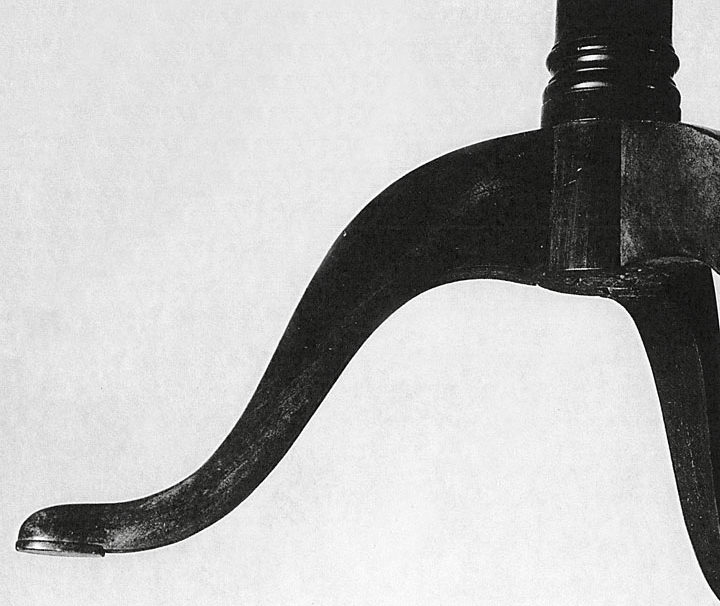Tea Table (1957.0080.001)
Essay by Eliza West, WPMAC '19
Today we admire three generations of Dominy men as accomplished craftspeople whose products have endured just as their workshops have been preserved. They stand as an example of enterprising American artisans who could solve any problem set to them by their local communities. While we celebrate their masterpieces, such as a tall case clock, or a desk and book case, other products of their shop can help us understand how a craftsman like Nathaniel Dominy V worked to his strengths to meet the diverse needs of his community.
Unlike chairs, Nathaniel Dominy made only a handful of tea tables. Though these objects were more expensive and less common, their manufacture still relied on the same body of skills. Nathaniel Dominy made this particular tea table for the use of his family in 1796. It consists of a round top, which sits on top of a “claw,” or pillar with three cabriole legs. The two parts are connected by a hinged block which allows the table’s top to be turned up, so that it can be conveniently put away along the wall of a room.



When using a lathe, Nathaniel V relied on pieces called puppets to hold the stock as it was turned. The puppets could be moved lengthwise to accommodate different length pieces or could be swapped out entirely. The arbor and cross which Nathaniel V used to make the tea table’s top was attached to its own puppet. When positioned at the very end of the lathe bed the holes in the cross allowed it to be screwed to the back surface of the table top. Used with the powerful great wheel lathe, the entire table top could thus be spun and shaped We know that this table’s top was turned on this arbor and cross in part because the screw holes can still be seen on the underside of the table.
Much like with the chair, Nathaniel V relied on his skill as a turner to produce this table. The table’s top, which is almost 27 inches wide, is turned from a single mahogany board. It is slight dished out, leaving a rim designed to keep the equipment of tea drinking from sliding off its surface. To achieve this effect, Nathaniel Dominy V used a special lathe attachment known as an arbor and cross. This tool allowed him to spin the entire disk of the table’s top, using his turner’s gouges and chisels to carve out the dished surface, and to create the decorative molding which runs around the table’s rim.
Tea tables of this sort were popular all around the Atlantic world. Looking closely at this object made in the Dominy woodworking shop can only begin to hint at the range of work done by Nathaniel Dominy V, not to mention his father and son. These three generations of craftsmen perfected a handful of craft skills which allowed them to meet a wide range of needs in their community.

